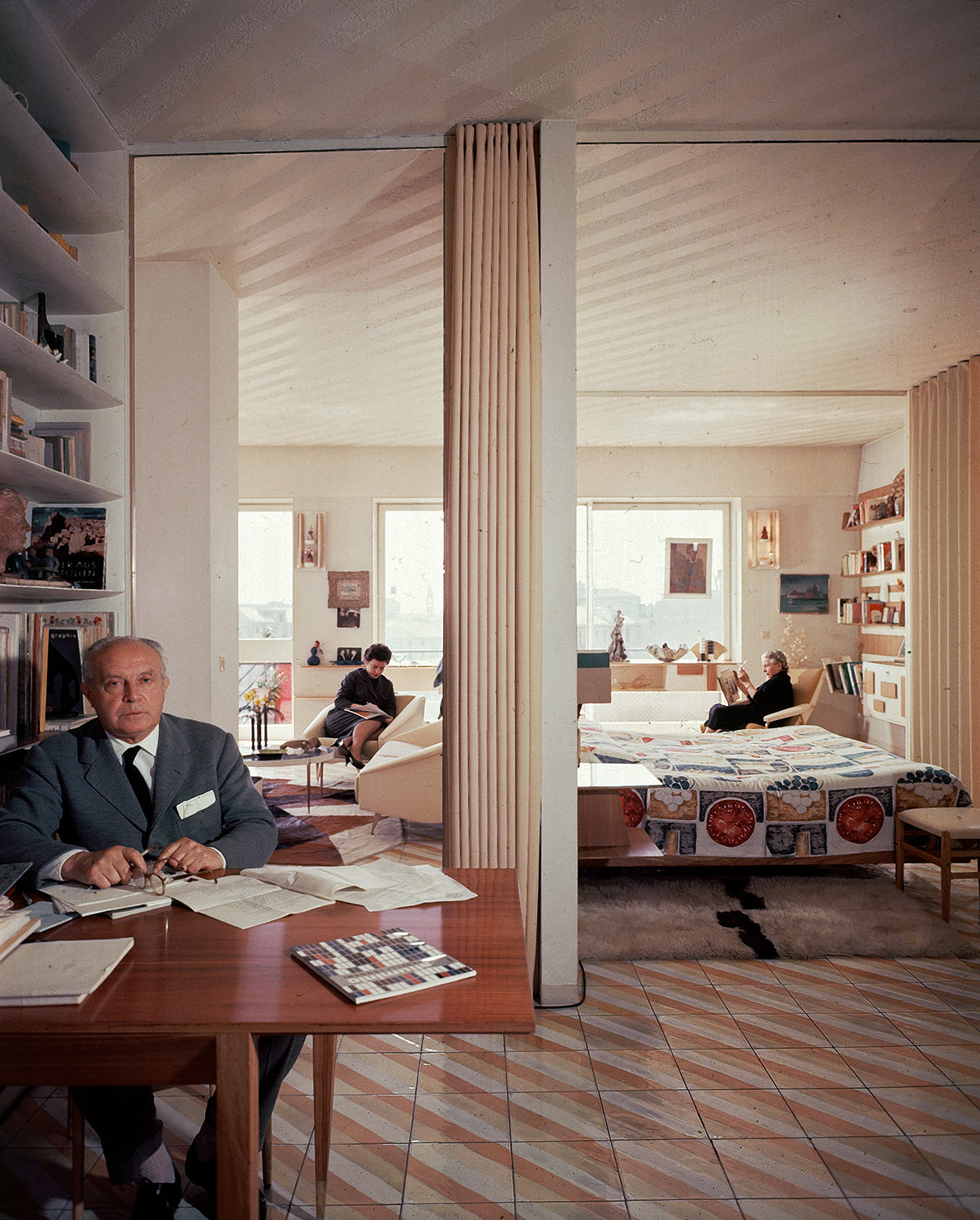Your Cart is Empty
When you buy a book, we plant a tree
On what would have been his birthday, we reflect on how this iconic individual transformed the design identity of a nation

A select few are inscribed in history as pioneers of modern Italian design and architecture, Gio Ponti was undoubtedly one of them. A designer in the truest definition, today he is known as the ‘Father of Modern Italian Design,' a tastemaker who co-created a phenomenon in style and beauty. From cathedrals to coffee machines, he was a 'starchitect' and opinion shaper that propelled Italian design into modernity.
Architect, designer, producer, publisher, writer, and progressive philosopher Gio Ponti was born on November 18, 1891, in Milan. The capital of Lombardy would later become his playground for creative adventures. He served in the military during World War I, from 1916 to 1918. After the war he studied at Politecnico di Milano, graduating in architecture in 1921. He began his career in partnership with Mino Fiocchi and Emilio Lancia from 1923 through 1927, Lancia then becoming his sole partner until 1933. In those years, Ponti became an important representative of modern classicism, which was known in Italy as the Novecento Italiano movement.

He was very attracted to and inspired by Italian historical heritage and classic styles, which played a definitive role throughout his career. From the beginning, Ponti understood the design process as a complex idea, not limited to only architecture. He soon began to produce his furniture pieces, as well as porcelain, ceramic, and maiolica objects for Richard Ginori, a well-established company that Ponti collaborated enthusiastically with for many years. His neo-classical designs for vases and other vessels created between 1923 and 1930 echo traditional Roman silhouettes and highlight Ponti’s refined skills in drawing and decoration.
In 1928, Ponti founded Domus magazine, a groundbreaking publication that went on to be one of the most influential on architecture and design of the last century. Gianni Mazzocchi, a 23-year-old publisher who had moved to Milan from the Marche region, purchased Domus in 1929 and founded Editoriale Domus, which still publishes the magazine today. Many important designers and architects have served as editors at Domus, including Giuseppe Pagano, Melchiorre Bega, Ernesto Nathan Rogers, Cesare Casati, Andrea Branzi, and Mario Bellini.
During the 1930s, Ponti moved forward with the new modernist style. He designed functionalist Casa Laporte on Via Brin in Milan, and in 1931 he founded Fontana Arte, an important producer of glass furniture and lighting. Among the most famous decorative pieces, he created for the company is the geometric Bilia lamp.

In the mid-1930s, Ponti received a huge architectural commission to design Palazzo Montecatini on Milan’s Via della Moscova. Built together with engineers Antonio Fornaroli and Eugenio Soncini in 1936, the structure was one of the first rationalist buildings in Milan. The architect-designed the complex modern office building with attention to every single detail—from lighting, sinks, and door handles to clocks and bent steel-tube office chairs. This was the first project of Ponti’s that highlighted his acumen in overall design solutions.
The postwar optimism brought a new colorful, flamboyant flavor to Ponti’s work. In 1950, he won the commission to design the 32-story Pirelli Tower in collaboration with Pier Luigi Nervi and Arturo Danusso—construction began in 1956. This was the second skyscraper built in Milan and likely the pinnacle of Ponti’s entire career. In 1952, he partnered with architect Alberto Rosselli and engineer Antonio Fornaroli and entered the most prolific period of his career in both design and architecture.
As the Pirelli Tower attracted more attention, domestic and international commissions flooded into Ponti’s office. He designed many buildings in Italy, Venezuela, Iran, Hong Kong, Netherlands, and the United States of America. His architecture of the 1950s and 1960s achieved a perfect symbiosis of construction and decoration.

Diamond-shaped structures were covered with refined relief decorative tiles to create works of art in all senses. He built a series of beautiful churches, including the Church of San Francesco d’Assisi al Fopponino in 1964, the church at Ospedale San Carlo in 1967, and the Taranto Cathedral in 1971; designed two Parco dei Principi hotels, one in Rome in 1956, and one in Sorrento in 1962; and created housing and office buildings. Probably the most striking of his projects during this time are three villas he built in Caracas and Tehran. Villa Planchart, Villa Arreaza, and Villa Nemazee are masterpieces in the joy of living. The most complex of the three was Villa Planchart in Caracas, commissioned by art collectors Anala and Armando Planchart in 1954. The house, dedicated to art, is a fascinating mosaic of bright colors and fluid shapes, showing Ponti’s optimistic Italian style at its best.
During the 1950s and 1960s, the architect established himself as a prolific furniture designer, alongside his product and industrial creations. He created several icons of Italian modernist design, including pieces for Cassina like the celebrated 1954 Distex armchair and the 1955 Superleggera chair. He also continued to design lighting for the Arredoluce brand, decorative tiles for Joo Ceramics and Ceramica D’agostino, silverware for Sabattini, and amazing sculptural enamel pieces for Paolo de Poli. He continued to build and design until he died in 1979. The elegance of Ponti's vision and charm continue to dazzle even after passing away over 40 years ago. He would often say, "the facade belongs to the passers-by," for him, architecture was there to be looked at. This ideology transformed Italy, encouraging it to burst from tradition and face the world as a powerhouse in style and design.
Visionary, radical, and iconic—a collective group of architects and designers showed a new model for living and communities, changing the world forever. Explore their legacy through Inside Utopia.